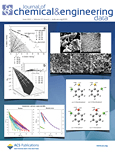
JOURNAL OF CHEMICAL AND ENGINEERING DATA
Scope & Guideline
Exploring the Intersection of Chemistry and Engineering Excellence
Introduction
Aims and Scopes
- Thermophysical Properties:
The journal emphasizes the measurement and modeling of thermophysical properties such as density, viscosity, heat capacity, and thermal conductivity across various chemical systems. - Phase Equilibria Studies:
Research related to phase equilibria, including vapor-liquid and liquid-liquid equilibria, is a core focus, highlighting the interactions and behaviors of multi-component systems. - Solubility Measurements:
The journal publishes studies on the solubility of compounds in different solvents, including organic solvents, ionic liquids, and aqueous systems, providing valuable data for industrial applications. - Modeling and Simulation:
The integration of experimental data with computational models such as molecular dynamics and statistical thermodynamics is a significant aspect, aiming to enhance predictive capabilities in chemical processes. - Environmental and Green Chemistry:
Recent contributions reflect a growing interest in sustainable practices, including the study of deep eutectic solvents and their applications for CO2 capture and other environmentally friendly processes.
Trending and Emerging
- Deep Eutectic Solvents:
There is an increasing number of studies focusing on deep eutectic solvents, highlighting their properties and potential applications in extraction, separation processes, and as sustainable solvents. - Machine Learning Applications:
The integration of machine learning techniques for predicting thermophysical properties and optimizing chemical processes is gaining traction, showcasing the journal's adaptation to modern computational approaches. - Ionic Liquids and Hybrid Systems:
Research on ionic liquids, particularly their combinations with other solvents or materials, is trending, with studies exploring their efficiency in various applications, including CO2 capture and separation processes. - Sustainable Processes and Green Chemistry:
An emerging emphasis on sustainable practices within chemical engineering is evident, with increased publications on renewable solvents, environmentally-friendly extraction methods, and waste minimization strategies. - Thermodynamic Modeling and Simulations:
There is a growing trend towards the use of advanced thermodynamic modeling and simulations to understand complex chemical interactions, which aids in the design and optimization of chemical processes.
Declining or Waning
- Traditional Solvent Systems:
There has been a noticeable decrease in publications focused on traditional solvent systems, as researchers increasingly explore alternative solvents and greener approaches to chemical processes. - Conventional Adsorption Studies:
Research on conventional adsorption processes using traditional adsorbents has seen a decline, as newer materials such as metal-organic frameworks (MOFs) and carbon-based adsorbents gain prominence. - Static Phase Equilibrium Investigations:
Studies that solely focus on static phase equilibria without incorporating dynamic aspects or real-time measurements have become less frequent, reflecting a shift towards more comprehensive and dynamic approaches. - Single Component Systems:
The focus on single component systems has diminished in favor of more complex multicomponent system studies, which are more applicable to real-world chemical engineering challenges.
Similar Journals
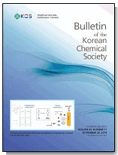
BULLETIN OF THE KOREAN CHEMICAL SOCIETY
Exploring the frontiers of multidisciplinary chemistry.BULLETIN OF THE KOREAN CHEMICAL SOCIETY, published by WILEY-V C H VERLAG GMBH, is a prominent journal in the field of chemistry, with a specific emphasis on miscellaneous chemical research. With an ISSN of 0253-2964 and E-ISSN 1229-5949, this journal serves as a pivotal platform for researchers, professionals, and students who are eager to showcase innovative studies that address both foundational and emerging topics in the discipline. Boasting a commendable Q2 ranking in the 2023 chemistry quartiles, the journal ranks within the top 50th percentile in Scopus, reflecting its commitment to high-quality scientific discourse. The content published within its pages from 1996 to 2024 covers a vast array of subjects, ensuring a multidisciplinary approach to chemical research. The journal’s impact in the academic community is underscored by its accessibility to a global audience, making it an essential resource for those wishing to stay at the forefront of chemical advancements.
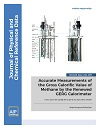
JOURNAL OF PHYSICAL AND CHEMICAL REFERENCE DATA
Empowering Research Through Reliable Reference DataThe Journal of Physical and Chemical Reference Data, published by AIP Publishing, stands as a pivotal resource in the fields of chemistry and physical sciences. With an ISSN of 0047-2689 and E-ISSN 1529-7845, this journal has been diligently curating and disseminating essential reference data since its inception in 1972. Covering a wide array of topics, it is classified in the top quartile (Q1) for miscellaneous chemistry and holds commendable standings in physical and theoretical chemistry, as well as general physics and astronomy, according to the latest Scopus rankings. Researchers and professionals rely on its comprehensive and accurate data to advance their work, making it an indispensable resource for academia and industry alike. While the journal does not currently offer open access options, its rigorous peer-review process ensures that each contribution maintains the highest scholarly standards, catering to a global audience dedicated to the advancement of physical and chemical knowledge.

JOURNAL OF SOLUTION CHEMISTRY
Advancing Knowledge in Solution ChemistryJournal of Solution Chemistry, published by Springer/Plenum Publishers, offers a vital platform for researchers and professionals engaged in the complex interplay of substances in solution, focusing on the interdisciplinary aspects of Biochemistry, Biophysics, Molecular Biology, and Physical and Theoretical Chemistry. Established in 1972 and traversing to 2024, this journal features extensive research articles that contribute significantly to the understanding of solution chemistry phenomena. Although it is categorized as Q4 in Biochemistry and Molecular Biology and Q3 in Biophysics and Physical and Theoretical Chemistry, the journal is set apart by its commitment to fostering innovative studies and methodologies within these domains. With an ISSN of 0095-9782 and an e-ISSN of 1572-8927, it remains accessible to a wide range of scholarly audiences despite the absence of open access options. As an essential resource for anyone invested in the foundational aspects of chemical interactions, the Journal of Solution Chemistry continues to shape the discourse in solution-based research, making it a critical asset for ongoing academic pursuits.
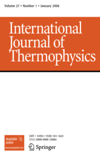
INTERNATIONAL JOURNAL OF THERMOPHYSICS
Fostering Interdisciplinary Insights in Thermal ScienceInternational Journal of Thermophysics, published by Springer/Plenum Publishers, is a premier platform for the dissemination of high-quality research in the field of thermophysics, particularly focusing on the intricate relationships between thermal properties and their applications across various scientific disciplines. With an ISSN of 0195-928X and an E-ISSN of 1572-9567, the journal has established a respected presence in the academic community since its inception in 1980, with a converged publication timeline extending to 2024. Categorized in the Q2 quartile for Condensed Matter Physics in 2023 and maintaining impressive Scopus rankings—such as #39 in Fluid Flow and Transfer Processes and #178 in Condensed Matter Physics—the journal serves as a vital resource for researchers and professionals aiming to advance knowledge in the thermal sciences. Though not an open-access journal, it remains accessible through institutional subscriptions. The International Journal of Thermophysics is committed to fostering innovative research and interdisciplinary collaboration, ensuring that it remains at the forefront of thermophysical studies.
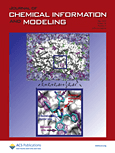
Journal of Chemical Information and Modeling
Transforming Data into Chemical Insights.Journal of Chemical Information and Modeling is a premier scholarly publication dedicated to advancing the fields of chemical engineering, chemistry, and computer science applications. Published by the reputable American Chemical Society, this journal significantly contributes to the scientific community through innovative research and critical reviews that facilitate the understanding and application of chemical information. With an impressive impact factor and a distinguished ranking in multiple categories—such as Q1 in Chemical Engineering and Q1 in Chemistry—the journal is an indispensable resource for researchers and professionals alike. As open access is not currently available, the journal preserves a selective distribution model that ensures high-quality content is accessible to a dedicated audience. By exploring the intersections of data science and chemical informatics, the Journal of Chemical Information and Modeling fosters interdisciplinary collaboration and innovation, positioning itself as a leader in its field. Researchers, professionals, and students are encouraged to engage with this influential platform for the latest developments in chemical information science.

JOURNAL OF PHASE EQUILIBRIA AND DIFFUSION
Exploring the Frontiers of Material InteractionsJOURNAL OF PHASE EQUILIBRIA AND DIFFUSION, published by Springer, stands as a pivotal resource in the fields of Condensed Matter Physics, Materials Chemistry, and Metals and Alloys. This esteemed journal, with an ISSN of 1547-7037 and an E-ISSN of 1863-7345, targets a diverse community of researchers, professionals, and students focused on the interactions and transformations of materials at various phases. With a commendable 2023 Q2 ranking across its relevant categories, it holds a significant position among contemporary scientific journals, with Scopus ranks reflecting its influence—#77 in Materials Science _ Metals and Alloys and #197 in Materials Science _ Materials Chemistry. Although it operates under a traditional subscription model, the journal's contributions span essential research and groundbreaking advancements from 2004 to 2024, encouraging rigorous exploration and fostering collaboration in pursuit of knowledge in phase equilibria and diffusion phenomena. The integrity and high standards maintained by the journal make it an indispensable platform for disseminating critical findings that shape the future of materials science.

JOURNAL OF ENGINEERING PHYSICS AND THERMOPHYSICS
Bridging Physics and Engineering for a Sustainable FutureJOURNAL OF ENGINEERING PHYSICS AND THERMOPHYSICS, published by Springer, is a vital resource for researchers and professionals in the fields of engineering physics and thermophysics. With an ISSN of 1062-0125 and an E-ISSN of 1573-871X, this esteemed journal has been disseminating high-quality research since its inception, covering critical advancements in both condensed matter physics and various engineering disciplines. Despite its classification within the third quartile in both Scopus categories for 2023, the journal remains a significant conduit for innovative studies that push the boundaries of knowledge in thermal and physical engineering, with converged years spanning from 1992 to 1997 and 2004 to 2024. The journal does not offer open access, which means subscribers and institutions have exclusive access to its rich content. As the field continues to evolve, JOURNAL OF ENGINEERING PHYSICS AND THERMOPHYSICS plays an essential role in fostering scholarly discussions and supporting the academic community in tackling contemporary engineering challenges.

Journal of the Mexican Chemical Society
Connecting Researchers to Transformative Chemical InsightsWelcome to the Journal of the Mexican Chemical Society, an essential publication for researchers and professionals in the field of chemistry. Published by the reputable SOC QUIMICA MEXICO, this journal has been a vital platform for sharing innovative research and developments in the field since its inception in 2008. With an ISSN of 1870-249X and an E-ISSN of 1665-9686, the journal provides valuable insights and contributes to the global scientific community. As of 2023, it holds a Q3 quartile ranking in miscellaneous chemistry categories and ranks #258 out of 408 in General Chemistry on Scopus, placing it at the 36th percentile among its peers. Although currently not an open access journal, it remains committed to disseminating high-quality research that supports advancements in chemical education, practice, and technology. Researchers, academics, and students are encouraged to engage with this journal to explore groundbreaking studies and enhance their understanding of diverse chemical disciplines.
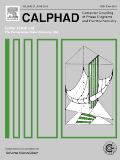
CALPHAD-COMPUTER COUPLING OF PHASE DIAGRAMS AND THERMOCHEMISTRY
Pioneering the Future of Phase Diagram ApplicationsCALPHAD: Computer Coupling of Phase Diagrams and Thermochemistry is an esteemed journal published by Pergamon-Elsevier Science Ltd, renowned for its contributions to the fields of Chemical Engineering, Chemistry, and Computer Science Applications. Established in 1977, this journal provides a platform for researchers and professionals to explore the innovative coupling of phase diagrams with thermochemical data, enhancing the understanding and application of these critical scientific principles. With an H-Index reflecting its significant impact within these fields, CALPHAD has maintained a Q2 quartile ranking in 2023 across its categories, highlighting its relevance and authority in ongoing research. The journal does not currently offer open access options, ensuring that articles undergo rigorous peer review before publication. With a focus on bridging computational and experimental methods, CALPHAD serves as an essential resource for advancing knowledge in phase transformation and thermodynamic modeling, catering to the needs of the academic community and industry practitioners striving for precision in material science and engineering.
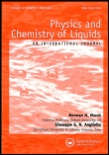
PHYSICS AND CHEMISTRY OF LIQUIDS
Bridging Physics and Chemistry through Liquid StudiesPHYSICS AND CHEMISTRY OF LIQUIDS is a distinguished academic journal dedicated to the exploration and advancement of liquid-state scientific research within the fields of physics and chemistry. Published by Taylor & Francis Ltd, this esteemed journal features contributions that delve into various aspects of condensed matter physics, materials chemistry, and characteristics of electronic, optical, and magnetic materials. With an ISSN of 0031-9104 and an E-ISSN of 1029-0451, it has been disseminating valuable knowledge since its inception in 1968. The journal’s commitment to academic rigor is reflected in its current Q3 rankings across multiple categories, including condensed matter physics and physical chemistry. Although not open access, the journal remains a crucial resource for researchers, professionals, and students seeking to stay at the forefront of liquid research advancements. Its publications contribute significantly to the understanding of the interactions and behaviors of liquid materials, making it an indispensable asset in both academic and industrial contexts.